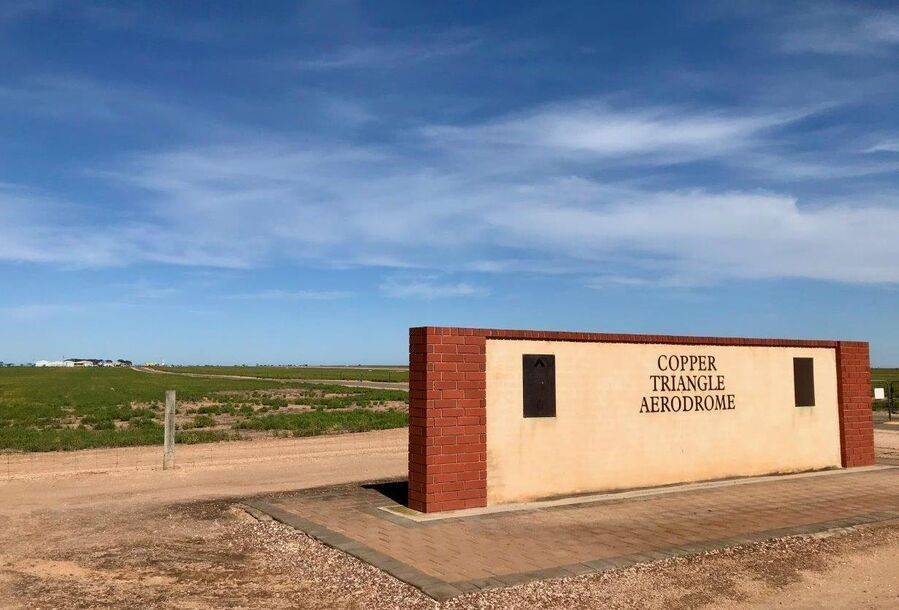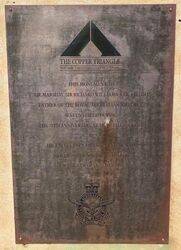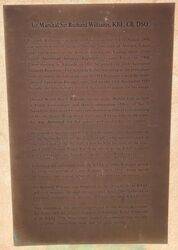
Air Marshall Sir Richard WilliamsPrint Page 
The monument commemorates Air Marshall Sir Richard Williams, known as the Father of the Royal Australian Air Force.
The monument was unveiled during the 75th anniversary of the Royal Australian Air Force (R.A.A.F.)
He was a pioneer member of the Australian Flying Corps and became the first Australian military pilot on 12 November 1914.
Air Marshall Sir Richard Williams, KBE,CB. DSO (1890 - 1980) is widely regarded as the "father" of the Royal Australian Air Force. He was the first military pilot trained in Australia, and went on to command Australian and British fighter units in World War One. A proponent for air power independent of other branches of the armed services, Williams played a leading role in the establishment of the R.A.A.F. and became its first Chief of Staff in 1922. He served as Chief of Staff for thirteen years over three terms, longer than any other officer.
Location
| Address: | Sandcock Road, Copper Triangle Aerodrome, Kadina, 5554 |
|---|---|
| State: | SA |
| Area: | AUS |
| GPS Coordinates: | Lat: -33.967405 Long: 137.668351 Note: GPS Coordinates are approximate. |
Details
| Monument Type: | Monument |
|---|---|
| Monument Theme: | People |
| Sub-Theme: | Military |
| Link: | http://www.vwma.org.au/ |
Dedication
| Actual Monument Dedication Date: | Sunday 6th October, 1996 |
|---|
Copper Triangle Aerodrome
This monument to Air Marshal Sir Richard Williams, KBE, CB, DSO, Father of the Royal Australian Air Force, was unveiled during the 75th anniversary year of that service by His Excellency Sir Eric Neal, AC, CVO, Governor of South Australia on the 6th October 1996
Air Marshall Sir Richard Williams, KBE, CB, DSO.
Richard Williams was born at Moonta on the 3rd of August 1890, the son of Cornish settlers. He was educated at Moonta School and then worked in the district, joining the Kadina depot of the South Australian Infantry Regiment (Citizen Force) in 1909. Upon moving to Adelaide in 1911 he joined the 10th Australian Infantry (The Adelaide Rifles), enlisting in the permanent military forces the following year. In 1914 Williams joined the newly created Australian Flying Corps, and on 12th November 1914 became the first military pilot in Australia to qualify for his wings.
During World War I Williams served in the Middle East as both a Flight Commander and then Commanding Officer of No. 1 Squadron, Australian Flying Corps, and later as Officer Commanding on No.40 (Army) Wing, Royal Air Force. A brave and capable pilot, he was decorated for his valour and leadership in combat.
Returning to Australia in 1919, he was instrumental in the formation of the Royal Australian Air Force in 1921, and was appointed as the first Chief of the Air Staff, a post he held for most of the years until 1939. During World War II he served as the RAAF’s senior representative in London and then Washington.
Following his retirement from the RAAF in 1946, Williams served as Director-General of Civil Aviation until 1955, doing much to foster the rapid growth of Australian aviation. Air Marshall was knighted for his services to the RAAF and civil aviation. He died on the 7th April 1980. Today he is properly remembered as the ‘Father of the RAAF’.
This monument was jointly constructed by the Royal Australian Air Force and the District Council of Northern Yorke Peninsula as a RAAF 75th Anniversary project to commemorate the life of a great Australian and son of this district.








